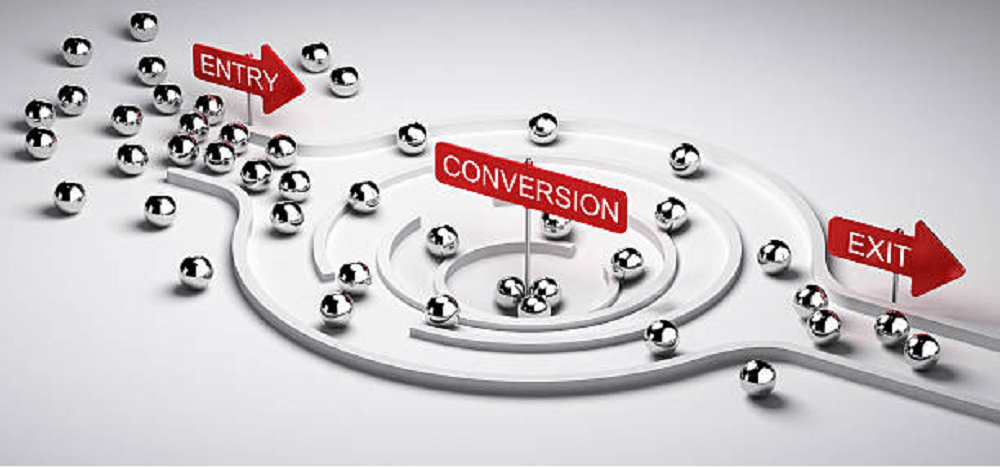In the ever-evolving landscape of consumer behavior, brands, and dealers have become adept at capitalizing on changes in buying habits to their advantage. By closely monitoring shifts in consumer preferences and behaviors, they can adapt their strategies and offerings to cater to the evolving needs and desires of their target audience.
Whether it’s embracing the digital age or responding to changing societal trends, brands and dealers seize these opportunities to enhance customer experiences and drive sales. By leveraging these changes, they can stay ahead of the competition, foster customer loyalty, and achieve sustained success in the marketplace.
Many Paths Lead to Purchase
The growth of e-commerce has encouraged consumers to research, discover, and buy products in a new way. You have the option of shopping on marketplaces, websites of dealers or brands, social media platforms, and other channels. In fact, according to a study by Channeladvisor, 38 % of buyers today indicate more directly via brand websites and other marketplaces than Amazon before the pandemic.
In addition, consumers are no longer passive when the latest trends are presented to them but are actively looking for them themselves. The survey shows that a third of consumers research more before buying than before the pandemic.

Discover how brands and dealers leverage changes in buying habits to their advantage in the world of Marketing vs. branding. Gain insights into strategic approaches that drive consumer engagement and loyalty.
The great technological advances of the past decade have led to the purchase habits of consumers changing. Studies show that consumers use several channels and devices to find out more about products.
For example, 60% of all online purchases are made via cell phone. These technical developments result in a new “Always-on” mentality and a sustainably changed path to purchase.
Read Also: Best Instagram Selling Tips – How and what can you sell on Instagram?
Technology Influences the Purchase
The traditional path of consumers is largely linear and, despite the innovations in the industry, has not changed: First, the consumer becomes aware of a product, then he considers it, and finally, he buys it. This process remains the same, regardless of whether someone needs ten minutes or ten months to acquire a product.
The technology has caused the technology that offers consumers more digital points of contact with the product on the way until the purchase. Consumers are better informed today, more demanding, and often impatient.
The abundance of information changes the traditional customer journey: If customer needs are not met, this can affect the turnover of a brand.
Digital Contact Points
The increase in digital points of contact such as online shops, apps, and marketplaces increases the visibility of products and enables consumers to discover them regardless of where the articles are listed.
Social media, for example, offers brands great opportunities to address the next generation of consumers. Statistics show that German consumers spend an average of 1 hour and 29 minutes a day on social media.
According to a YouGov study, 42 % of Germans have already bought a product through social media or can imagine doing this. A digital strategy that includes social media will therefore be crucial for future business success.
The increase in channels has made the market much more competitive. Because brands and dealers are now fighting for the attention of consumers and their own visibility. This requires new strategies such as Shoppable Media or the use of social commerce.
Keep Customers in the Bar
Implement a CSR strategy to create a welcoming environment, retain customers, and build lasting relationships in your bar. According to a current survey by Channeladvisor, Amazon and search engines are the most important channels for researching consumers. You are looking for a specific product over several channels, expand your product knowledge, and determine the best price or possible alternatives.
Therefore, it is so important to maintain the interest of consumers on the way to buying. Because your attention span is short and you have a lot of choices – potential sales are slightly lost. Brands and dealers should therefore highlight their content with current product descriptions, images, blogs, and reviews.
With the proliferation of online and physical channels, consumers now have a plethora of options when it comes to purchasing a product. This shift in buying habits underscores the increasing significance of consistent messaging for brands and dealers. Whether online or in brick-and-mortar stores, maintaining a cohesive message becomes crucial.
It ensures that consumers are well-informed about the product and facilitates a seamless buying experience, aligning with their evolving buying habits. By providing clear and consistent information across channels, brands, and dealers can effectively engage customers and enhance their overall purchasing journey.
Read Also: Risk Management Process: Important Key Steps Involved
Stand Out
The last stage of the traditional customer journey is the purchase. The way a brand stands out from its competitors and how smoothly it designs the way to buy is decisive for its success.
Due to the increase in e-commerce, the shopping landscape is populated more densely than ever. Brands often prevail those use tactics such as buyer discounts, instruction videos, and seed-day delivery options, as they provide the buyer with more information and keep it with their offers.
Seamless purchase processing also makes a big difference. Buyers today expect everything to be as simple as the “one-click checkout” on Amazon. Every difficulty on the way to the cash register quickly means that a consumer leaves his shopping cart and instead buys from the competition.
Positive Experience After Purchase
Providing a positive experience after purchase is essential for customer satisfaction and retention. With a risk management approach, businesses can ensure timely delivery, product quality, and excellent customer support. This fosters trust, encourages repeat purchases, and enhances brand loyalty.
One key aspect that brands and dealers focus on after understanding changes in consumer buying habits is providing a positive experience after the purchase. They recognize that the journey doesn’t end at the point of sale; it extends to the post-purchase stage where customer satisfaction and loyalty can be further strengthened.
To ensure a positive post-purchase experience, brands and dealers invest in effective customer support and service. They prioritize prompt and helpful responses to customer inquiries or concerns, offering multiple channels of communication such as phone, email, and live chat.
By being readily available to address any issues or questions that may arise, they demonstrate their commitment to customer satisfaction and build trust.
Moreover, brands and dealers go the extra mile to provide value-added services and resources. They offer detailed product guides, tutorials, or user manuals that assist customers in making the most out of their purchases.
Additionally, they may provide warranty options, extended return periods, or loyalty programs that incentivize repeat business and foster a sense of loyalty among customers.
In the digital age, brands and dealers leverage technology to enhance the post-purchase experience. They utilize customer relationship management (CRM) systems to personalize interactions and tailor recommendations based on previous purchases.
They may also implement automated order tracking systems, sending timely updates on shipping and delivery, which helps to alleviate customer anxiety and create a sense of transparency.
Furthermore, brands and dealers actively seek feedback from customers to continually improve their products and services. They may encourage customers to leave reviews, provide ratings, or participate in surveys, allowing them to gather valuable insights and address any areas for improvement. By actively listening to customer feedback, they demonstrate their commitment to meeting customer needs and preferences.
By prioritizing a positive experience after the purchase, brands, and dealers aim to surpass customer expectations, elevate satisfaction levels, and foster repeat business. They recognize that a satisfied customer, shaped by their buying habits, is not only inclined to become a loyal advocate for the brand but also wields influence through positive word-of-mouth recommendations.
Ultimately, by placing a strong emphasis on the post-purchase experience, brands and dealers establish a solid foundation for long-term success and growth in a competitive marketplace, while effectively adapting to evolving buying habits.
Conclusion – Buying Habits
In conclusion, brands and dealers have recognized the importance of understanding and leveraging changes in consumer buying habits to their advantage. By staying attuned to shifting preferences and behaviors, they can tailor their marketing strategies, innovate their products, and create personalized experiences that resonate with customers.
Whether it’s adapting to emerging trends, embracing new technologies, or aligning with evolving values, brands, and dealers actively seek opportunities to enhance customer satisfaction and drive business growth. By embracing these changes, they can not only meet the demands of the market but also surpass customer expectations, ultimately solidifying their position as industry leaders.
With a proactive approach to understanding and utilizing buying habits, brands and dealers can thrive in a dynamic marketplace and build long-lasting relationships with their customers.






